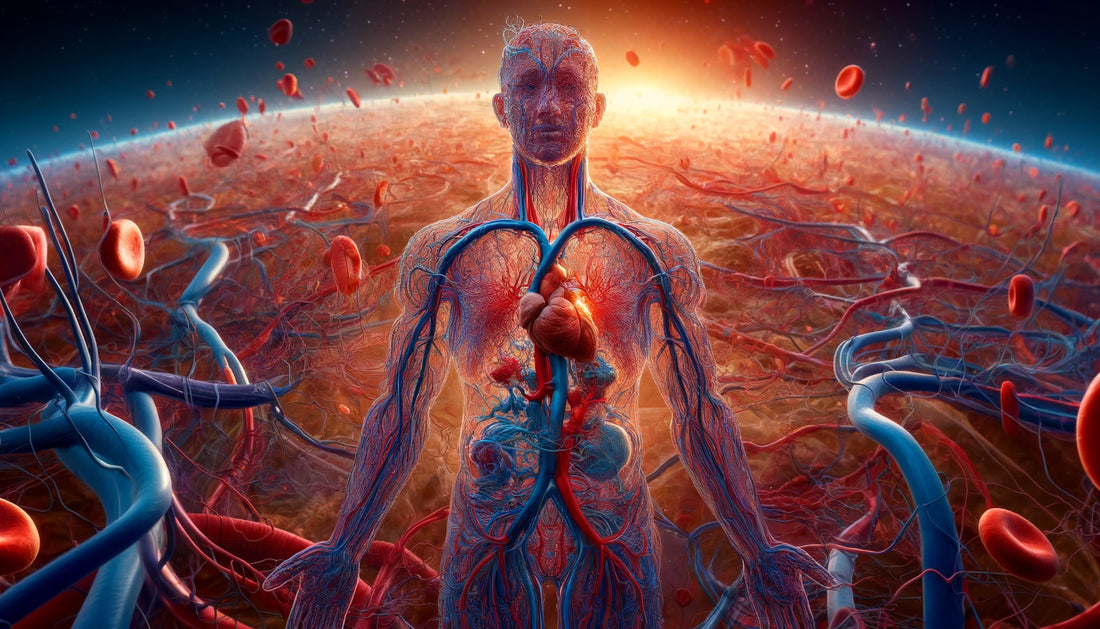
The Nutrient Highway: From the Gut to the Bloodstream
Share
The Nutrient Highway: From the Gut to the Bloodstream
Once the nutrients from your food are broken down in the gut, the next leg of their journey begins—absorption into the bloodstream. This step marks the transition of nutrients from digestion to circulation, allowing them to travel to every organ, tissue, and cell in your body.
How Nutrients Enter the Bloodstream
-
The Small Intestine: A Gateway to the Body
Most nutrient absorption occurs in the small intestine. Tiny hair-like structures called villi line the intestinal walls, creating a vast surface area to absorb nutrients efficiently. Each villus contains capillaries and lymph vessels, which transport nutrients into the bloodstream or lymphatic system.- Water-Soluble Nutrients (e.g., vitamins B and C, amino acids, glucose) enter the bloodstream directly via the capillaries.
- Fat-Soluble Nutrients (e.g., vitamins A, D, E, K, and fatty acids) are absorbed into the lymphatic system before entering the bloodstream.
-
The Role of the Liver
Once nutrients enter the bloodstream, they first pass through the liver. The liver acts as the body’s nutrient-processing hub, filtering out toxins, storing certain vitamins and minerals, and converting nutrients into forms that the body can use.
The Bloodstream: A Delivery System
The bloodstream is like a nutrient highway, transporting essential elements to the cells that need them most. Here’s how different nutrients are distributed and used:
- Glucose: Delivered to cells for energy or stored in muscles and the liver as glycogen.
- Amino Acids: Used to build and repair tissues, produce enzymes, and support immune function.
- Vitamins and Minerals: Help with various functions, such as strengthening bones (calcium), boosting immunity (zinc), and producing energy (iron and magnesium).
The Kidneys: Filtration and Balance
As the bloodstream circulates nutrients, the kidneys work as the body’s filtration system. They:
- Remove waste products and excess nutrients from the blood.
- Maintain a balance of electrolytes like sodium and potassium, which are vital for nerve function, hydration, and muscle contractions.
- Regulate blood pressure by managing fluid levels in the body.
When you consume nutrient-dense food, the kidneys operate more efficiently because they’re not overloaded with toxins or excessive processing demands.
Nourishing Every Cell
The nutrients in the bloodstream are delivered to every cell in your body, fueling processes like:
- Energy Production: Glucose and fats are converted into ATP, the energy currency of cells.
- Cell Repair and Growth: Proteins and vitamins like vitamin C contribute to building strong, resilient tissues.
- Immune Support: Vitamins, minerals, and antioxidants work together to fight off infections and repair damage.
The Brain: A Nutritional Powerhouse
One of the most nutrient-demanding organs in the body is the brain. Nutrients like omega-3 fatty acids, antioxidants, and B vitamins play key roles in brain health.
- Oxygen and Glucose Delivery: The brain requires a constant supply of oxygen and glucose to function optimally.
- Neurotransmitter Production: Nutrients like tryptophan (found in nutrient-rich proteins) are precursors to serotonin, a neurotransmitter that regulates mood.
- Inflammation Reduction: Antioxidants and polyphenols from food help combat oxidative stress in the brain, reducing the risk of cognitive decline.
The Bigger Picture
From the soil to the gut, bloodstream, and brain, every step in this journey highlights the interconnectedness of the systems that sustain life. When the soil is healthy, the food it produces nourishes our bodies in ways that extend far beyond simple calories. It fuels our energy, strengthens our immune systems, balances our mental health, and ultimately supports our ability to thrive.
In the next article, we’ll explore how this interconnected system impacts your long-term health, focusing on how the brain, mental health, and physical performance are all tied back to the soil beneath our feet.
Next Article: How Nutrients Shape Your Brain, Mental Health, and Physical Performance
